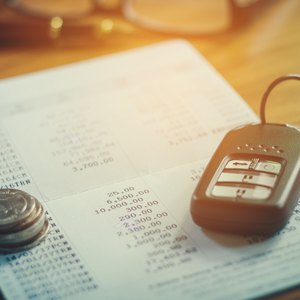
You’re free to drive your car as you please, customize it to your specifications, and it’s you who pays for the vehicle’s gasoline, but until you make the final payment to your auto lender, you don’t own your car free and clear. The lender’s lien against the vehicle gives it the right to repossess your car if you start missing payments. The lender then sells the car in an effort to minimize its losses.
Losing your car to repossession, however, doesn’t mean your dealings with the lender are over for good. If your lender has to repossess your car, it will charge you both repossession and towing charges. When a repossession becomes imminent, returning your vehicle to the bank yourself via a process known as voluntary repossession lowers the fees you’ll face after the transaction is complete.
Contact the Lender Directly
Call the bank that holds your auto loan. Explain that you can no longer afford the loan and would like to return the car voluntarily. Schedule a time and place to drop off the car.
Negotiate With the Supervisor
Ask for a supervisor if you know you owe more on the loan than the car is worth. Ask the supervisor to reduce or waive any deficiency on the car in exchange for you returning the car voluntarily. The deficiency is the difference between the loan balance and the car’s sale price. Not all banks will negotiate a vehicle’s deficiency, even when you give the car back voluntarily, but some do, as they do not want the hassle of repossessing and selling your car--even if that repossession does not involve paying a professional to retrieve the car. Because of this, the bank may offer you special provisions, such as temporarily lowering your interest rate or deferring payments, in an effort to help you keep your car.
Arrange a Ride Home
Ask a loved one to follow you to the designated drop-off location in his vehicle. This provides you with a way home after returning your car to the bank.
Turn Over the Appropriate Items
Drop off your car as agreed. Give the lender the keys and registration paperwork. Sign any documents the lender presents noting that you relinquished the vehicle voluntarily.
Request Proof of the Transaction
Ask for a written statement from the bank proving that you returned the loan’s collateral in lieu of paying off the loan. Put the documentation in a safe place. This receipt protects you in the event your lender makes an error and either claims you did not relinquish the car or that you owe repossession and towing fees.
Be Aware of Credit Implications
A voluntary repossession is just as detrimental to your credit score as an involuntary repossession. You'll need to work hard to bring your credit score back up after turning the car back over to the bank.
References
- Federal Trade Commission: Vehicle Repossession – Understanding the Rules of the Road
- Balance Financial Fitness Program: Vehicle Repossession – Know Your Rights and Responsibilites
- Bills.com: All About Voluntary Repossession
- NOLO: I Can't Afford My Car Payments. Can I Give the Car Back to the Bank?
- Duncan Law LLP: If I Choose to Voluntarily Turn in My Car, What Should I Do?
- Federal Trade Commission. "Vehicle Repossession." Accessed Sept. 30, 2020.
- Experian. "How Long Does It Take for a Repossession to Come off Your Credit?" Accessed Sept. 30, 2020.
- Nolo. "Deficiency Judgment." Accessed Sept. 30, 2020.
- Experian. "What is a Buy Here, Pay Here Dealership." Accessed Sept. 30, 2020.
- Georgia Department of Banking and Finance. "Repossession (Vehicles)." Accessed Dec. 20, 2019.
Writer Bio
Ciele Edwards holds a Bachelor of Arts in English and has been a consumer advocate and credit specialist for more than 10 years. She currently works in the real-estate industry as a consumer credit and debt specialist. Edwards has experience working with collections, liens, judgments, bankruptcies, loans and credit law.

